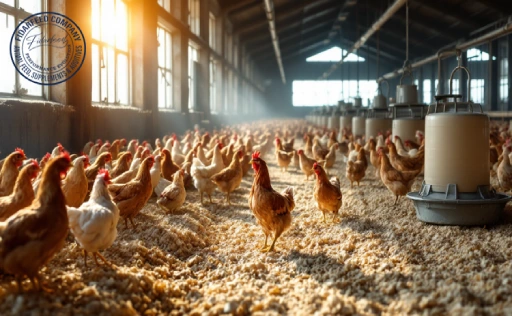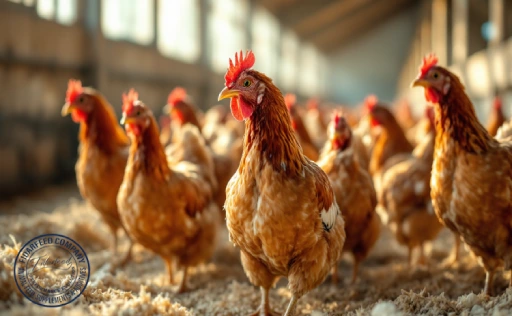Global Market Analysis of Alternative Protein Sources: Why It Matters to Livestock Breeders
Global Market Analysis of Alternative Protein Sources is no longer a niche topic—it’s a frontline conversation that livestock breeders can’t afford to ignore. As feed costs climb and sustainability becomes a pressing concern, producers worldwide are searching for practical, affordable, and nutritionally sound alternatives to traditional protein sources like soybean meal and fishmeal. Whether you’re running a small operation or managing a large-scale enterprise, understanding the global dynamics behind these new protein solutions can help you make better, more profitable decisions. Keep reading to find out how these shifts can benefit your livestock and bottom line.
Global Demand for Alternative Protein Sources: What’s Driving Market Growth?
The rapid rise in demand for alternative proteins is fueled by a perfect storm of global pressures. Traditional protein sources are becoming increasingly expensive due to climate-related crop failures, geopolitical trade issues, and rising energy prices. At the same time, consumers are more conscious of environmental impact, animal welfare, and sustainable practices—all of which put pressure on producers to seek out greener alternatives.
Learn more about: Probiotic Supplement for Livestock
According to a 2024 report by MarketsandMarkets, the global market for alternative protein in animal feed is expected to surpass $10 billion by 2030, with an average annual growth rate exceeding 9%. This explosive growth shows a clear global appetite for innovation in livestock nutrition.
Top Alternative Protein Sources Gaining Global Traction in Livestock Feed
Alternative proteins aren’t one-size-fits-all. Depending on the region and livestock species, breeders are adopting a variety of protein-rich options:
- Insect Meal: Rich in amino acids and highly digestible, insect-based feed (such as black soldier fly larvae) is gaining momentum in Europe and Asia.
- Algae-Based Protein: Known for its high protein content and omega-3 fatty acids, algae is used in poultry and aquaculture diets.
- Fermented Yeast and Fungi: Efficiently produced and nutrient-dense, these are especially popular in North America.
Learn more about: Alternative Feed Ingredient
- Legumes and Pulses: Peas, lentils, and chickpeas offer plant-based protein options that are sustainable and widely available.
- By-Products from Food Industries: Brewer’s yeast, wheat gluten, and oilseed cakes are being repurposed efficiently as cost-effective protein sources.
Key Regions Shaping the Global Market for Alternative Proteins in Livestock Farming
Europe leads the way in adopting insect-based proteins, thanks to progressive regulations and strong support for sustainable farming practices. The Netherlands, in particular, has invested heavily in insect farming technologies. Meanwhile, in Asia—especially in China and India—algae and food industry by-products are in high demand due to growing livestock populations.
Learn more about: Essential Guide to Efficient Livestock Waste Management
North America is not far behind, focusing on precision fermentation and microbial proteins. U.S.-based startups are attracting significant investment, highlighting the region’s role in protein innovation. Livestock breeders should pay close attention to these trends to anticipate where costs, supply, and competition may shift in the coming years.
Real-World Adoption: How Livestock Farms Are Using These Proteins
In Germany, a group of dairy farmers has successfully incorporated black soldier fly meal into calf starter feeds. They report improved weight gain and gut health, with no drop in milk production later. Similarly, a poultry farm in Thailand is using algae protein to reduce dependency on soybean imports, cutting feed costs by 15% while maintaining egg quality and quantity.
Learn more about: Type of Silage: A Comprehensive Guide for Livestock Farmers
These real-life examples demonstrate that alternative proteins are not just a trend—they’re proving to be a practical part of everyday animal nutrition.
Cost Analysis and Market Value Projections to 2030
The initial cost of alternative protein feed may be higher than traditional options in some regions, particularly where infrastructure is still developing. However, lifecycle cost assessments suggest that these proteins lead to better feed efficiency and animal health, reducing the need for antibiotics and medical interventions.
Learn more about: Livestock Feed Suppliers: Your Source for Premium Animal Nutrition
By 2030, analysts forecast that the price gap between traditional and alternative proteins will narrow substantially. This will make alternatives not only viable but also preferable for many breeders.
Economic Risks vs. Rewards: What Should Breeders Watch Out For?
No innovation comes without risks. For breeders considering alternative proteins, potential challenges include:
- Supply Chain Instability: Limited availability in rural regions.
- Regulatory Variability: Rules differ drastically between countries and even states.
- Animal Acceptance: Livestock may initially resist unfamiliar tastes or textures.
Learn more about: Why Choose Prepared Feed for Your Farm Animals: Livestock, Poultry, and Aquaculture
Still, the long-term rewards—including better margins, improved sustainability credentials, and premium market access—often outweigh the risks when transitions are done carefully and gradually.
Research-Driven Insights: Nutrition, Efficiency, and Performance
Peer-reviewed studies from institutions like Wageningen University and the University of Guelph show that insects and yeast-based proteins offer amino acid profiles comparable to fishmeal. Trials in swine and poultry have demonstrated equal or superior feed conversion ratios (FCR), along with enhanced immunity and growth performance.
Learn more about: Did You Know Livestock Productivity with TMR Silage Can Double?
This kind of science-backed evidence is crucial for breeders making decisions that impact herd health and profitability.
Sustainability of Alternative Protein Sources in Livestock Feed: The Global Market Advantage
Alternative proteins contribute to a smaller environmental footprint by using less water, land, and energy than traditional protein crops. They also help reduce greenhouse gas emissions and waste.
Learn more about: Type of Silage: A Comprehensive Guide for Livestock Farmers
For breeders, this translates into marketability. Brands and retailers increasingly favor suppliers who can demonstrate sustainable practices, offering breeders a competitive edge in B2B and export markets.
Final Takeaway: Strategic Preparation for the Global Shift to Alternative Protein Sources in Livestock
Global Market Analysis of Alternative Protein Sources reveals that this trend is not only growing—it’s here to stay. Breeders who begin experimenting with small-scale integration today can position themselves as early adopters, ready for the future.
Start by consulting with a nutritionist, sourcing locally available options, and trialing new formulas gradually. Join industry forums, connect with researchers, and keep a close eye on regulations. The protein revolution is well underway, and livestock breeders who adapt early will be the ones reaping the biggest rewards.
Have thoughts, questions, or experiences to share? Leave a comment below or reach out—we’d love to hear how you’re navigating the changing landscape of livestock nutrition.








